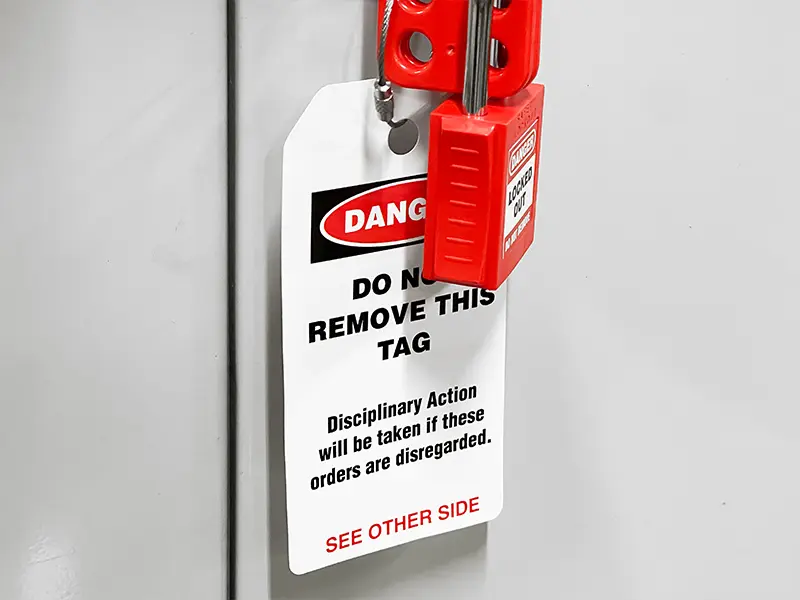What is a Lockout Tagout (LOTO) Procedure in Mining?
The mining industry is inherently high-risk, with heavy machinery and a range of energy sources in constant use. To mitigate these risks, robust safety measures, including Lockout Tagout (LOTO) procedures, are indispensable. Implementing a LOTO procedure is critical for controlling hazardous energy and ensuring worker safety. But what exactly is a LOTO procedure, and why is it essential in the mining sector?

Introduction: What is a LOTO Procedure?
A Lockout Tagout (LOTO) procedure is a safety protocol designed to protect workers from hazardous energy during maintenance, servicing, or repairs of machinery and equipment. By isolating and de-energising machinery, LOTO procedures prevent accidental start-ups, energy release, or the activation of dangerous systems that could cause severe injury or death.
Key elements of LOTO include:

Lockout devices
Physical locks placed on energy-isolating devices to prevent machinery from being powered on.

Tagout devices
Tags that communicate warnings, identify the worker responsible for the lockout, and provide essential information about the procedure.
Why is a LOTO Procedure Necessary in Mining?
Mining operations involve complex machinery, diverse energy sources, and challenging working conditions, making the implementation of a thorough LOTO procedure vital for ensuring worker safety. A comprehensive LOTO safety procedure is essential for the following reasons:
- Prevention of injuries: Accidental energisation of equipment can lead to severe injuries such as crushing, electrocution, or burns. In some cases, these incidents can be fatal.
- Compliance with regulations: Following LOTO procedures ensures compliance with Australian safety standards, reducing liability and maintaining operational credibility.
- Worker confidence: Properly implemented LOTO procedures create a culture of safety, enhancing trust in workplace practices and improving morale and productivity.
- Control of hazardous energy: Hazardous energy sources—such as electrical, mechanical, hydraulic, or pneumatic energy—are common in mining operations. LOTO procedures ensure these are effectively neutralised before work begins.
What Are the HSE Regulations for LOTO?
In the UK, the Health and Safety Executive (HSE) provides guidelines for Lockout/Tagout procedures to ensure workplace safety. The HSE recommends the use of isolation devices and lockout/tagout procedures to control hazardous energy sources during maintenance activities.
For more information on HSE regulations, visit HSE Guidance on Machinery Isolation.

When Should a LOTO Procedure Be Implemented?
A LOTO procedure must be followed whenever there is a risk of hazardous energy exposure. Common scenarios in mining include:
- Before performing repairs, maintenance, or servicing on equipment.
- Prior to entering confined spaces such as grain bins or tanks.
- Before tasks that require a worker to place their body near a machine’s point of operation.
- During the installation or removal of heavy machinery.
The LOTO Procedure Step-by-Step
- Prepare the Workspace
Identify all energy sources associated with the equipment. This may include electrical, mechanical, thermal, hydraulic, pneumatic, and chemical energy sources. Use appropriate tools and resources to assess the situation comprehensively. - Clear the Area
Remove unnecessary personnel and tools from the workspace. Set up barriers if required and gather essential items like locks, tags, and personal protective equipment (PPE). Consider using durable lockout tags that are highly visible and designed for industrial environments. - Communicate with Your Team
Notify all affected personnel about the upcoming lockout. Clear communication ensures everyone is aware of the procedure and avoids accidental interference. - Safely Shut Down Equipment
Follow standard operating procedures to de-energise equipment. Remove residual chemicals, close valves, and attach identification tags. High-quality safety tags provide clear warnings and critical information during this step. - Isolate Energy Sources
Turn off all energy sources by flipping circuit breakers, closing valves, or engaging disconnect switches. Attach the designated lockout tags and secure equipment with locks. Keep the key to the lock on your person and never transfer it to anyone else. - Release Stored Energy
Safely release any residual energy by bleeding air pressure, neutralising chemicals, or blocking mechanical components. This step ensures all potential hazards are neutralised. - Verify Isolation
Test the equipment to confirm it cannot restart. Ensure all energy sources are physically isolated and verify that hazardous energy is effectively controlled. Durable safety tags can remain in place to maintain visibility of the procedure. - Perform Maintenance or Service
With the equipment safely locked out and all steps verified, proceed with your service or repair activities confidently. - LOTO Device Removal & Returning to Service
Reverse the lockout procedure, ensuring that the workspace is clear and that all safety guards are restored.

Best Practices for LOTO in Mining
- Always use durable and reliable lockout tags, such as those designed specifically for harsh mining environments.
- Train workers regularly on the importance and steps of LOTO procedures.
- Conduct routine audits to ensure compliance and identify potential areas for improvement.
- Never skip steps or take shortcuts during the lockout or tagout process.
Final Thoughts
LOTO procedures are essential for worker safety in the mining industry. Following Australian Safety Standards and implementing robust LOTO protocols ensures compliance and protects workers from hazardous energy.
To help you implement effective safety measures, download our Lockout Tagout (LOTO) Checklist for use on-site. This checklist will guide your team through each critical step to ensure energy sources are properly isolated and equipment is safely serviced.
Need assistance with your LOTO tags?
Our team is here to help you select lockout tagout solutions to enhance your workplace operations. Reach out today and let us recommend the most effective lockout and tagout devices for your needs.




